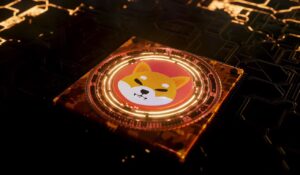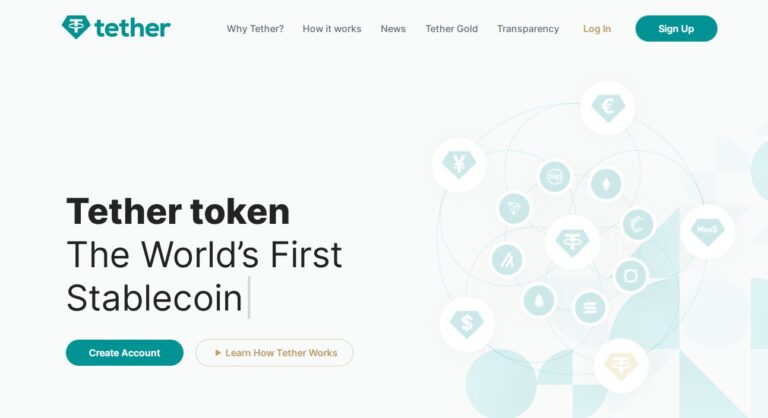The Graph (GRT) stands as a transformative force in the realm of decentralized technologies, offering a streamlined approach to blockchain interactions. It revolutionizes the way applications are built and how critical data is tracked, significantly contributing to the expansion of DeFi (Decentralized Finance) and Web3 platforms.
By simplifying the process of app development and data management, The Graph presents a user-friendly interface that enhances the overall user experience.
Exploring The Graph (GRT)
The Graph is transforming the interaction within blockchain networks by streamlining the development of new applications and efficient data tracking. This cutting-edge platform empowers developers to provide superior user experiences, eliminating the necessity for individualized back-end frameworks for each application.
- Innovations in Data Indexing: The Graph stands out for its decentralized approach to blockchain data indexing, enhancing the ease of data query and retrieval. This approach ensures that data is readily accessible and adaptable for a diverse array of applications;
- Influence on DeFi and Web3: The Graph’s contributions are making a lasting impact on the DeFi and Web3 infrastructures, contributing significantly to their growth and evolution.
The Distinctive Protocol
Utilizing decentralized ledger technology and the GraphQL language, The Graph introduces a revolutionary decentralized protocol that streamlines the gathering of blockchain data, independent of external services.
- Technological Advancements: The platform excels in simplifying the indexing, organization, and querying of blockchain data, delivering results with unmatched accuracy and speed;
- Broad Compatibility: The Graph offers services compatible with Ethereum, IPFS, and PAO, and is poised to broaden its scope even further;
- Data Organization via Subgraphs: Data is efficiently organized using hosted services, with workflow automation facilitated through open APIs known as subgraphs.
Ensuring The Graph Network’s Stability
The Graph’s mainnet is anchored by a comprehensive node structure. In this system, various roles such as indexers, curators, delegators, and consumers utilize GRT tokens to guarantee the integrity of data across the network.
- Critical Role of GRT: Serving as the foundational cryptocurrency of The Graph, GRT is indispensable in the distribution of resources within the ecosystem. Network participants, including indexers, curators, and delegators, rely on GRT to execute their responsibilities and obtain rewards from the network;
- Guidance and Oversight: The Graph Foundation plays a crucial role in guiding and coordinating the efforts of network participants. The Graph Council is responsible for the overarching governance and decision-making within the network.
The Minds Behind the Platform
In 2018, Yaniv Tal, Brandon Ramirez, and Jannis Pohlmann, driven by the challenges in Ethereum-based dapp development, established The Graph. Their mission was to develop an innovative decentralized platform for indexing and querying, aimed at simplifying Web3 and dapp development.
- Founders’ Background and Leadership: Coming from an engineering background and having co-founded a startup in the developer tools space, the trio brings a wealth of expertise. Yaniv Tal spearheads the project, with Brandon Ramirez leading the research efforts and Jannis Pohlmann overseeing the technological aspects;
- Launch and Objectives: The Graph was launched on December 17, 2020, marking a new era in Web3 and dapp development. It was designed to facilitate easy and accessible development through immutable APIs using the GraphQP query language.
Growth and Financial Backing
Raising a remarkable $19.5 million through public and private funding rounds, The Graph (GRT) garnered significant financial support. Key investors included Coinbase Ventures, Digital Currency Group, Framework Ventures, and Multicoin Capital, highlighting the industry’s faith in The Graph’s future and capabilities.
Operational Dynamics
The Graph Protocol emerges as an advanced resource for both developers and users, providing an open API environment for the creation of subgraphs that are versatile across numerous applications. Demonstrating its formidable capability, The Graph’s hosted service impressively handled 20 billion queries in April 2021, a testament to its strength in data indexing and extraction.
- Role of Graph Node: Positioned at the heart of the system, the Graph Node diligently sifts and organizes data from blockchain databases, ensuring efficient data indexing for effective retrieval;
- Network’s Structural Composition: The architecture of the platform is built around four key participant types: delegators, indexers, curators, and consumers. Each group plays a vital role in the network’s operation, utilizing GRT tokens to contribute to its functionality.
Indexers – Foundational Components
Indexers are essential to the network, utilizing their staked GRT to provide indexing and querying services, and are compensated with query fees and additional rewards.
- Technical Commitment: Indexers engage in the network’s most technically demanding tasks, operating node software that provides fast and efficient data access on Ethereum and other compatible networks;
- Ecosystem Contribution: The pivotal role of indexers ensures rapid and reliable data accessibility, crucial for the Graph ecosystem’s overall functionality.
Curators – Navigating Data Discovery
Curators are tasked with developing subgraphs and advising indexers on prioritizing data sources, leveraging their deep understanding of blockchain environments.
- Motivation for High-Quality Data: Curators deposit GRT into specific subgraphs to signal quality data sources, earning a fraction of the query fees as a reward;
- Curator Activities Illustrated: For example, should a curator spot a promising new DeFi subgraph, they can guide indexers to it, gaining a share of the query fees for their early detection.
Delegators – Reinforcing Network Security
Delegators, who do not operate a node, contribute significantly to the network’s security, playing a vital non-technical role in upholding its integrity.
- Function and Compensation: Delegators allocate their GRT to high-performing indexers via the Graph Explorer dapp, earning a portion of the query fees and indexing rewards in return.
Consumers – Utilizing The Graph’s Services
Consumers, as the end-users, engage with the subgraphs, compensating indexers, curators, and delegators for their services.
- Fee Transaction Process: These fees are processed through gateways or wallets developed on the network’s open-source contracts, ensuring a smooth and secure mechanism for accessing The Graph’s services.
GRT’s Integral Role in The Graph Network
GRT, recognized as an ERC-20 token, is the cornerstone of The Graph network, creating a reward system that incentivizes key network players like indexers, curators, and delegators to enhance the network’s functionality.
GRT’s Influence Throughout the Network:
- Delegators: They allocate their GRT holdings to Indexers, playing a key role in maintaining the network’s nodes;
- Indexers: Utilizing staked GRT, indexers facilitate essential operations within the network;
- Curators: Recognized for their curation efforts, curators receive GRT as a form of compensation;
- Consumers: These end-users deploy GRT tokens to access the indexing services of The Graph;
- Enabling Applications: GRT is instrumental in unlocking a range of decentralized applications across The Graph network and its allied platforms;
- Token Allocation and Fiscal Strategy: Initially, the platform released 10 billion GRT tokens, with a planned annual increment of 3% dedicated to indexing rewards. The platform also employs a burn strategy for the taxes incurred by curators upon withdrawal and a portion of the aggregate query fees. The circulating supply of GRT, which is subject to future administrative decisions, currently stands at around 6.9 billion.
Procuring The Graph (GRT) Tokens
The process of adding GRT tokens to one’s digital currency collection has become more user-friendly, thanks to applications like the Tap mobile app. This app now includes The Graph in its diverse array of supported digital currencies.
Methods to Obtain GRT:
- Dual Currency Acquisition: GRT is available for purchase using both cryptocurrencies and conventional fiat currencies;
- Standard Payment Options: For acquiring GRT, users can opt for regular payment modes, including bank transfers;
- Wallet Integration: The app’s integrated wallet system provides a secure and user-friendly environment for handling and safeguarding GRT assets.
Revolutionizing Data Access
The Graph network introduces a groundbreaking method for accessing data in a decentralized manner, marking a significant leap in the blockchain and decentralized application sectors.
Major Contributions:
- Decentralized Data Handling: The Graph enhances the way blockchain data is managed in a decentralized fashion;
- The Role of Subgraphs: Acting as the foundational elements, subgraphs or open APIs enable the creation and management of APIs for various blockchain data sets;
- Promoting Ecosystem Development: The platform plays a crucial role in nurturing the DeFi and Web3 environments through its vital data infrastructure capabilities.
Deciphering The Graph’s Economic Structure
The economic structure of GRT is meticulously designed to nurture and expand The Graph’s ecosystem, harmonizing incentives with network operations.
Economic Framework:
- Balanced Incentive Mechanism: The Graph’s economic system establishes a well-balanced incentive model for all those involved in the network, fostering both stability and expansion;
- Strategic Token Allocation: The initial allotment of GRT tokens was strategically executed to bolster network growth and foster community involvement.
Conclusion
The Graph (GRT) stands as a transformative force in the domain of decentralized technologies, enhancing the efficiency of data indexing and extraction within blockchain networks. The strategic use of GRT tokens cultivates a dynamic ecosystem, motivating active participation and contribution to the network’s effectiveness and progression.
Beyond its technological prowess, The Graph significantly impacts the evolution of the DeFi and Web3 sectors. As the platform continues to develop and evolve, its role and influence within the blockchain community are anticipated to grow, positioning it as a central figure in the future landscape of decentralized applications and data stewardship.






